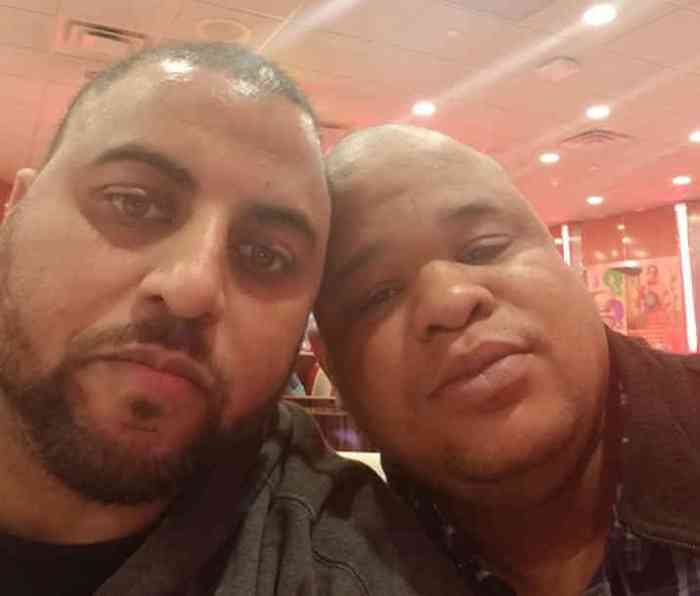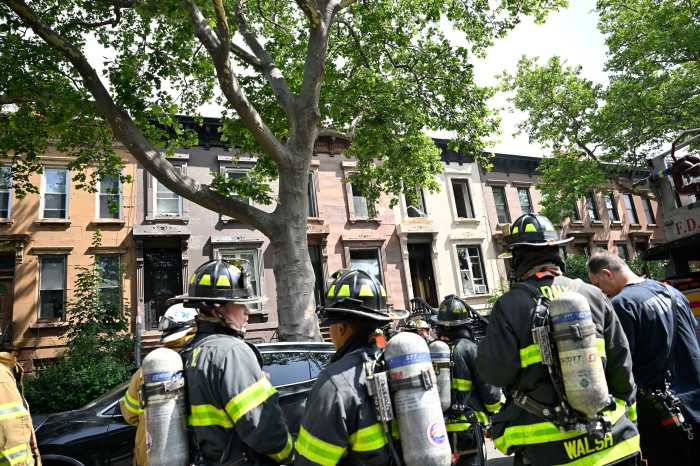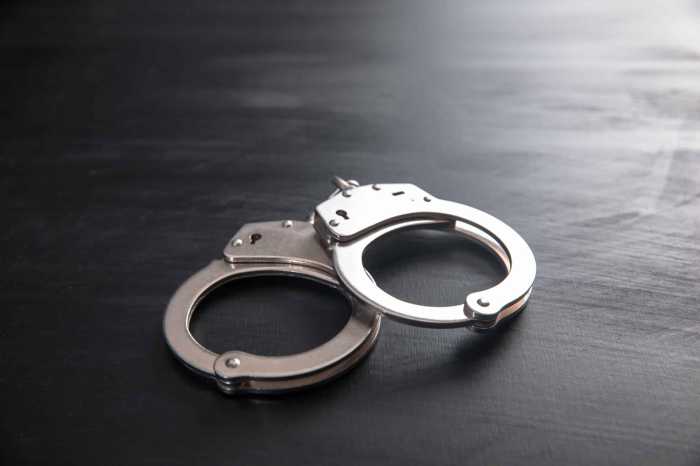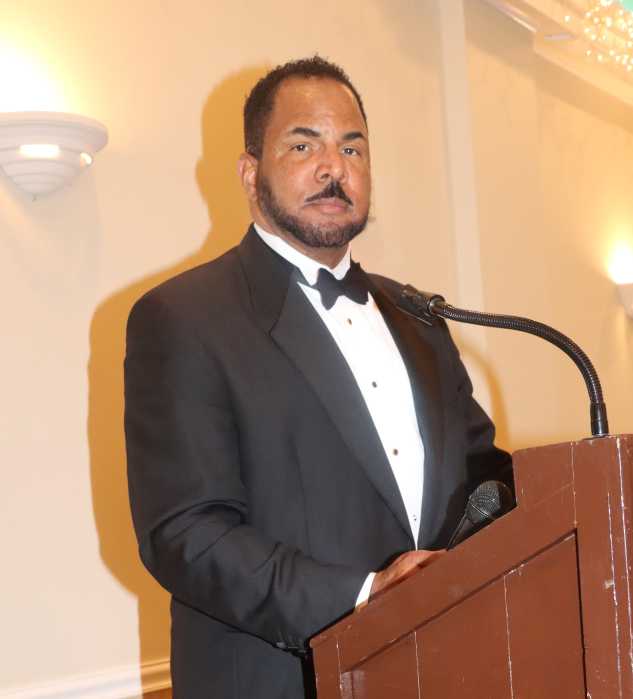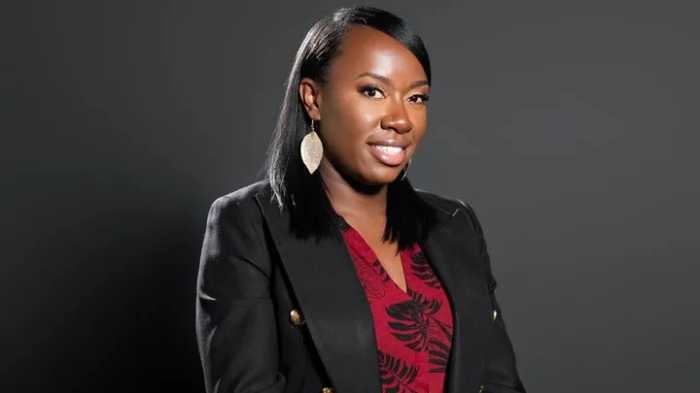James Hawkins was brutally murdered in his Chelsea apartment in 1993.
Taking the stand in his own defense, the man who is accused of the brutal 1993 murder of James Hawkins testified that a third man armed with a knife entered Hawkins’ Chelsea home while he and Hawkins were partying there and that Hawkins was alive and uninjured when he fled the apartment.
“He went into his pocket and he pulled out a knife, a pocketknife,” said Gordon Francis on the stand on June 19. “He demanded my money… He stabbed me in my hand.”
The 60-year-old Francis is charged with a single count of second-degree murder in this case. He was arrested in 2012 after DNA evidence linked him to the crime scene. His 2014 trial ended in a mistrial.
According to Francis, he was an escort in 1993 and had been hired by Hawkins, who was 54 at his death, about a half dozen times. They spoke by phone late in the afternoon on August 15, 1993, the day Hawkins was murdered. Hawkins asked that he come to his apartment and bring 10 dime bags of crack cocaine. Once there, Francis recalled that Hawkins gave him $100 for the cocaine and $100 for his services. Francis said he placed the $200 on a table next to the piano in Hawkins’ fourth floor apartment while he played the piano.
Gordon Francis claims he fled armed intruder in James Hawkins’ Chelsea home
The two men retired to the bedroom and smoked the cocaine. A third man, who Francis said Hawkins knew, entered the apartment and demanded money. Francis said he gave the man the $7 he had in his pocket and was then stabbed. He then exited the bedroom, walking past the front door, to retrieve the $200 he had left on the table. Upon seeing that the third man was in the bedroom with his back toward him, Francis said he raced out of the apartment.
Francis left a trail of his blood in the building’s stairwell and on a door at the building’s entrance. The building had an exterior front door and then a second door in a small foyer. The blood was on the inside of the second door.
Hawkins’ murder was singularly savage. He was stabbed 25 times with multiple wounds to his lungs, his liver, and the sac that surrounds the heart, Dr. Michele Slone, the deputy chief medical examiner for Manhattan, testified on June 18. Slone did not perform the autopsy, but she reviewed records from that procedure. Slone reported that there were three to four liters of liquid and coagulated blood in Hawkins’ chest indicating that he was alive for some time after being stabbed.
“There was no injury that was immediately incompatible with life,” she said. “He was active long enough to bleed into his chest.”
The Manhattan District Attorney’s Office was confronted with several obstacles in bringing this cold case to trial. The original investigative file at the 10th precinct, which is directly across 20th Street from the Hawkins’ apartment, was lost. Several pieces of physical evidence were stored in an NYPD warehouse that was flooded by Hurricane Sandy. Police and federal Occupational Safety and Health Administration (OSHA) rules bar police from handling that evidence because it is tainted by toxic chemicals.
The case relies on the testimony of a neighbor who heard the struggle in Hawkins’ apartment and then heard one person exit the building. Only Francis’ and Hawkins’ blood was found at the scene.
An inmate at Rikers Island who was housed with Francis told jurors that Francis admitted to killing Hawkins.
Prosecutors also played a recording of a call between Francis and his wife in which he said to her, “Don’t make me kill again” and “Don’t make me fuck you up.”
After his 2012 arrest, he was placed in a car with Siobhan Berry, a detective in the prosecutor’s office, and spontaneously said, “That’s not me. The first I heard of it, 25 times. That’s not me. I have no remorse, no remorse, only for myself.”
In 1993, Francis did seek medical attention for his hand, but in the Bronx where he lived. He did not go to the 10th precinct after being attacked. The evidence is that Francis was told soon after August 15, 1993 that Hawkins had been murdered and he did not go to police then.
“I don’t like investigation or the police or snitching,” he said when cross-examined by Coleen Balbert, the assistant district who is prosecuting the case along with Annie Siegel, also an assistant district attorney.
Juries can respond positively to defendants who testify though it is impossible to measure the impact of such testimony until after a verdict. What may harm Francis’ credibility is that he had very specific memories of what occurred on August 15, 1993, but otherwise could not recall details of his other encounters with Hawkins or anyone else from that time.
“You were able to remember with particularity the conversation you had with James Hawkins on August 15, 1993,” Balbert said as she pressed Francis on his recollections from 1993.
As she continued to question him, moments later, Francis said ,“I really can’t remember. You want me to be specific, but I really can’t.”
Francis insisted that police testimony of his earlier conflicting accounts of the 1993 events were lies and that he never admitted to the killing to the other Rikers Island inmate. Francis insisted they were never even housed together.
“It’s a conspiracy,” he said as Balbert questioned him.


